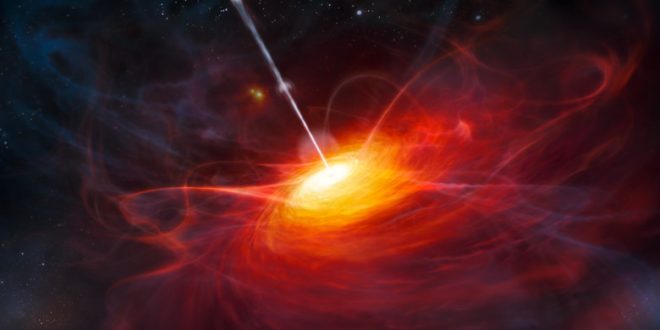Astronomers discover 63 of the most powerful, luminous, and energetic objects known in the Universe in one study.
“The formation and evolution of the earliest light sources and structures in the universe is one of the greatest mysteries in astronomy,” lead author Eduardo Bañados from the Carnegie Institution for Science said in a statement released Monday. “Very bright quasars such as the 63 discovered in this study are the best tools for helping us probe the early universe. But until now, conclusive results have been limited by the very small sample size of ancient quasars.”
The universe burst into existence nearly 13.8 billion years ago in an event we call the Big Bang.
In the beginning, the cosmos was a hot soup of ionized gas — with electrons and ions of hydrogen and helium buzzing around. Then, roughly 400,000 years after the Big Bang, the universe entered an era of “recombination,” wherein it cooled down enough to allow ions to recombine into atoms. Although this era is believed to be the first time light shone in our universe, it didn’t last long. The universe was soon plunged into the “dark ages” — the time before the birth of the first stars.
When the first generation of stars were born, about 500 million years after the Big Bang, they emitted strong radiation that ionized hydrogen once again, triggering an era of “reionization” that eventually led us to where we are today — a universe filled with stars and planets made up of a plethora of heavy elements, and the omnipresent Cosmic Microwave Background (CMB), which is the radiation left over from the era of recombination.
This era of reionization, when the first condensed sources of matter were formed, is what scientists hope to study using these ancient quasars.
“There is still a lot about this era when the universe’s lights were turned back on that science doesn’t understand. But having more examples of ancient quasars will help experts to figure out what happened in those first billion years after the Big Bang,” the Carnegie Institution said in the statement.
Agencies/Canadajournal
 Canada Journal – News of the World Articles and videos to bring you the biggest Canadian news stories from across the country every day
Canada Journal – News of the World Articles and videos to bring you the biggest Canadian news stories from across the country every day



